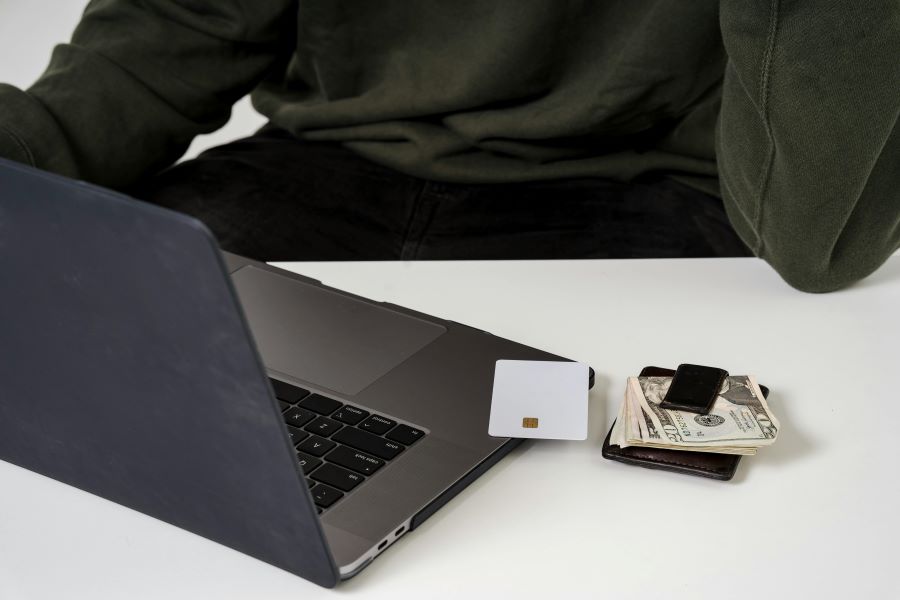When you need extra funds, two common borrowing options are overdrafts and personal loans. But which one should you choose? The right decision depends on your specific financial situation and needs. In this article, we’ll examine overdraft vs personal loans, looking at their key features, pros and cons. By understanding the differences, you can make a smart choice that works best for your wallet.
Understanding Overdrafts
Overdrafts are a financial tool that can help you manage cash flow challenges. Here are key insights into how they work and when to use them:
What is an Overdraft?
An overdraft is a credit facility linked to your bank account. This allows you to withdraw more money than you have in your account up to a pre-approved limit. It’s a convenient way to access short-term funds when you need them.
How do Overdrafts Work?
-
Your bank approves an overdraft limit based on your credit profile and relationship with the bank
-
You can withdraw funds exceeding your account balance up to the overdraft limit
-
Interest is charged only on the overdrawn amount, not the entire overdraft limit
-
Overdrafts are usually valid for 12 months and renewable annually
Overdraft Interest Rates and Fees
Overdrafts typically have higher interest rates compared to personal loans. Here’s a quick comparison to know the difference between overdraft and personal loan:
|
Borrowing Option |
Interest Rate Range |
|---|---|
|
Overdraft |
18-24% per annum |
|
Personal Loan |
10-24% per annum |
Banks also charge processing fees and renewal fees on overdrafts. Be sure to factor in all costs when considering an overdraft.
When to Use an Overdraft
Overdrafts are best suited for:
-
Emergencies requiring immediate funds
-
Small, recurring expenses that exceed your bank balance
-
Short-term funding needs, like month-end cash crunches
Suppose you need ₹20,000 to pay your credit card bill while waiting for your salary. Then, an overdraft can be a quick solution. The interest cost will be lower than personal loan EMIs or credit card interest.
Examining Personal Loans
Personal loans offer a structured way to access funds for various financial needs. Below are essential details about their features, interest rates, and ideal use cases:
What is a Personal Loan
A personal loan is a lump-sum credit facility with fixed repayment terms. Unlike overdrafts, the entire loan amount is disbursed to you upfront. You repay it over a fixed tenure through Equated Monthly Installments (EMIs).
Key Features of Personal Loans
-
Repayment tenures from 12 to 60 months
-
Prepayment charges of 2-5% usually apply
-
Processing fee of up to 2% of the loan amount
-
Loan amount ranges from ₹50,000 to ₹40 lakh
-
Interest rates depend on your credit score, income, existing debts
With Airtel Finance personal loan, check your loan eligibility, view customized offers, and apply online via the Airtel Thanks app. Plus, get your loan disbursed in just 2 hours!
Personal Loan Interest Rates
Personal loan interest rates are usually lower than overdrafts and credit cards. The actual rate depends on the lender’s assessment of your credit profile. For instance:
|
Credit Score |
Interest Rate |
|---|---|
| 750+ |
10.5% – 12% p.a. |
| 700-749 |
12% – 16% p.a. |
| 650-699 |
15% – 21% p.a. |
Using a personal loan EMI calculator, you can estimate your monthly repayments. For a ₹5 lakh loan at 12% interest for 3 years, the EMI would be ₹16,607. Always aim for a longer tenure to keep EMIs affordable.
When a Personal Loan Works Better
Personal loans are ideal when you need funds for:
-
Large, planned expenses like home renovation or a vacation
-
Debt consolidation, i.e. repaying multiple high-interest debts
-
Long-term investments like business expansion or higher education
For instance, Rahul took a ₹10 lakh personal loan at 14% interest for 4 years to launch his small business. His EMI of ₹27,558 was manageable from his business revenues. The longer tenure kept his cash flows healthy.
Overdraft vs Personal Loan: Pros & Cons
Now that we know the basics let’s compare the pros and cons of overdraft vs personal loan:
Overdraft Pros
Pay interest only on the amount used
Ideal for short-term, small funding gaps
Flexible withdrawals, use funds as needed
Overdraft Cons
Higher interest rates than personal loans
Require collateral security in some cases
The temptation to overspend as funds are easily accessible
Personal Loan Pros
Longer repayment tenures, up to 5 years
Lower interest rates compared to overdrafts
No collateral is required for most personal loans
Personal Loan Cons
Longer approval process than overdrafts
Inflexible, the entire loan is disbursed upfront.
Prepayment charges if you settle the loan early
Which Option is Better: Overdraft vs Personal Loan?
The choice of which is better overdraft or personal loan, depends on your specific needs:
-
For small, short-term expenses, overdrafts are convenient and cost-effective. The interest burden is lower for small overdrawn amounts.
-
For large, planned expenses and long-term investments, personal loans are more suitable. The lower interest rates and longer EMI tenures make repayment easier.
Conclusion
In the overdraft or personal loan debate, there’s no one-size-fits-all answer. Overdrafts work well for short-term money needs, while personal loans are better for big-ticket spending. Review your financial goals, compare costs and choose the option that fits your budget.
For a smart borrowing experience, check out Airtel Finance Personal Loans. You can get quick approvals and put money in your account within hours. Use the Airtel Thanks app, a digital application, for this purpose. Know your loan offers and apply online instantly!
FAQs
Q1. Which option is better for short-term borrowing: overdraft or personal loan?
Overdrafts are more suitable and cost-effective for short-term borrowing needs.
Q2. What are the interest rates for overdrafts compared to personal loans?
Overdrafts have higher interest rates of 18-24% p.a. Personal loans are cheaper at 10-24% p.a.
Q3. Which is better: an overdraft or a personal loan?
It depends on your needs. Overdrafts suit small, short-term funding, while personal loans are better for large, long-term expenses.
Q4. Can I use an overdraft for large purchases like a personal loan?
While possible, it’s not advisable. High overdraft interest rates make large borrowings expensive. Personal loans are better for big purchases.
Q5. What is the difference between an overdraft and a personal loan?
An overdraft is a credit limit linked to your bank account, allowing withdrawals exceeding your balance. A personal loan is a lump-sum credit disbursed upfront with fixed EMIs.


 Get App
Get App  Airtel Store
Airtel Store  Login
Login 


